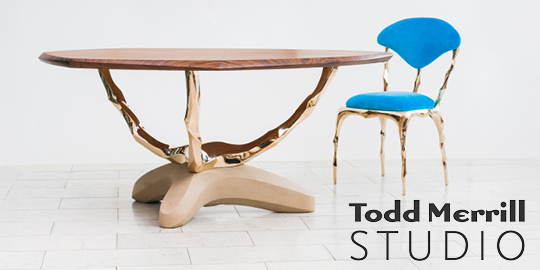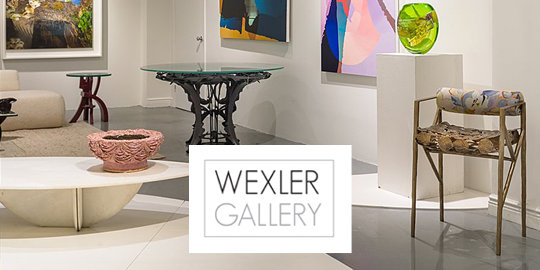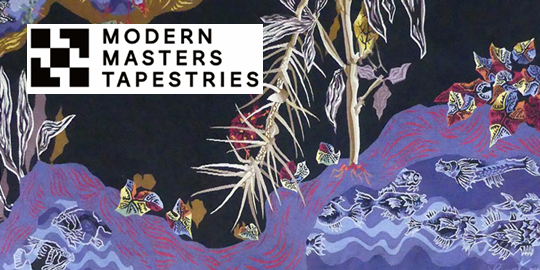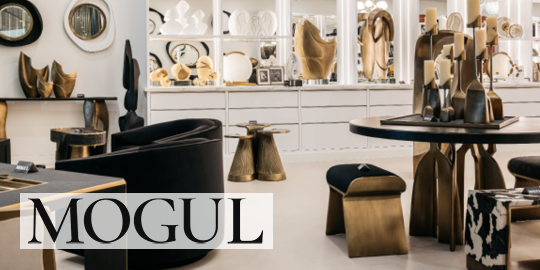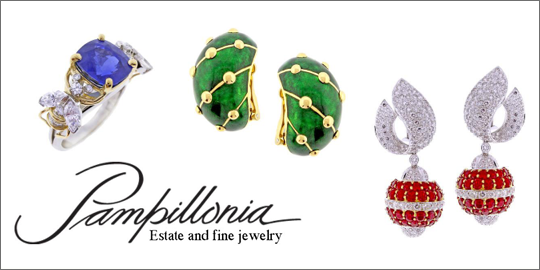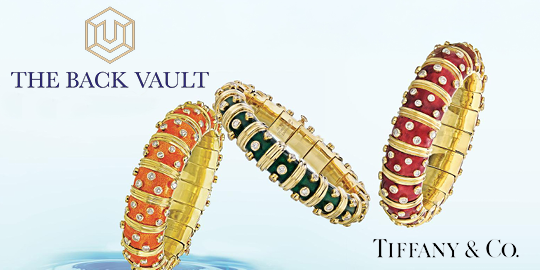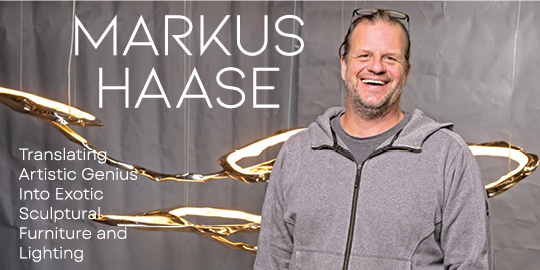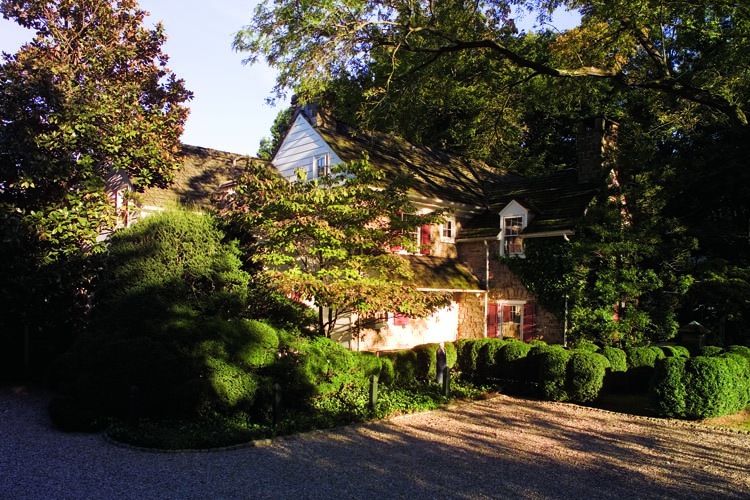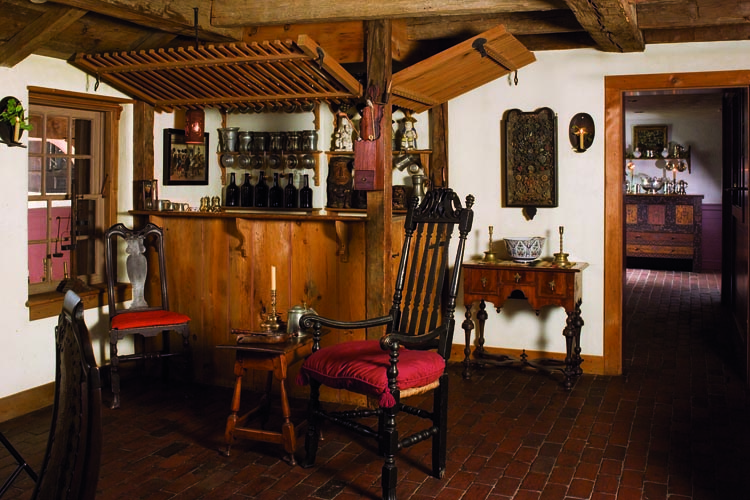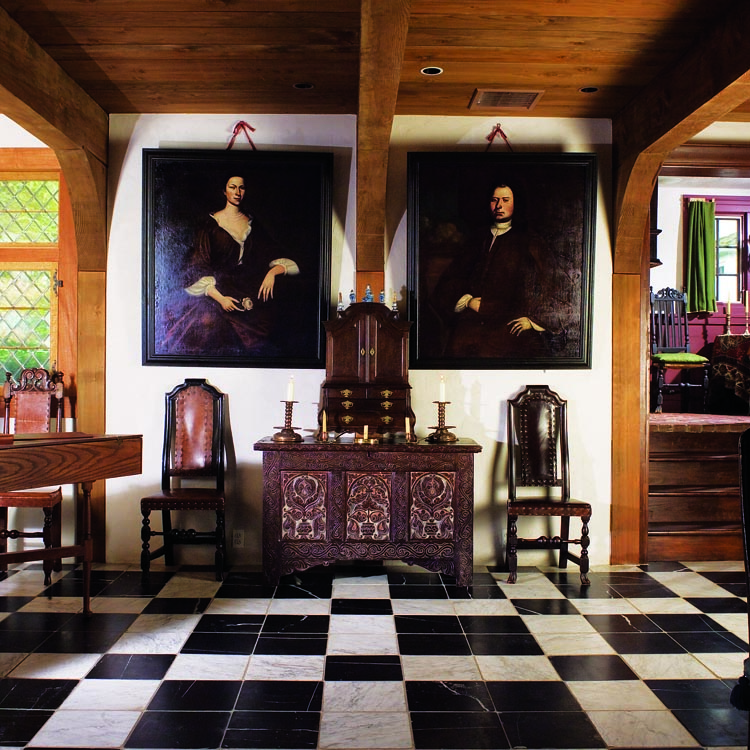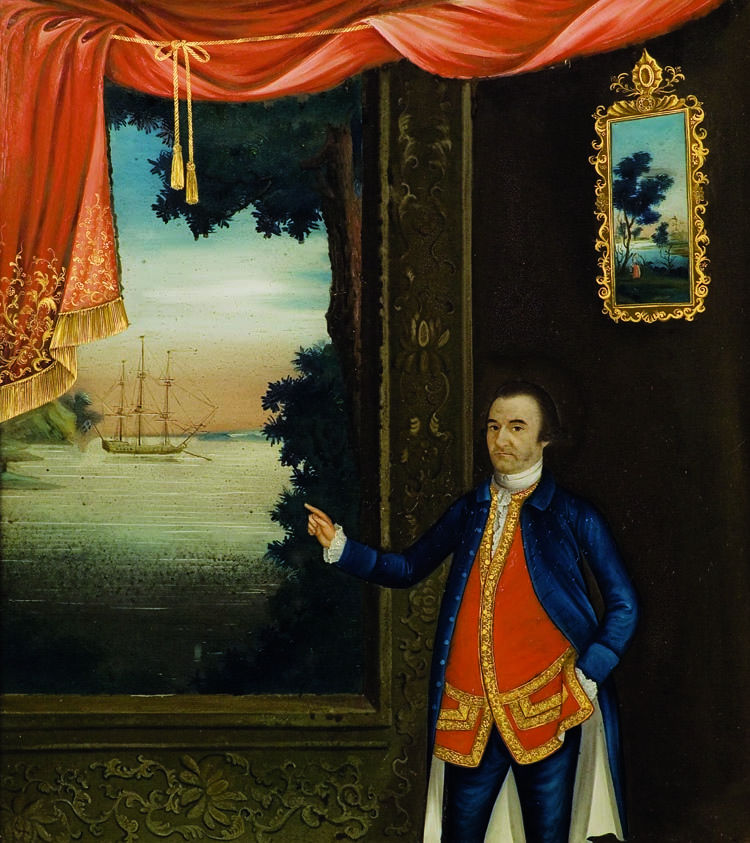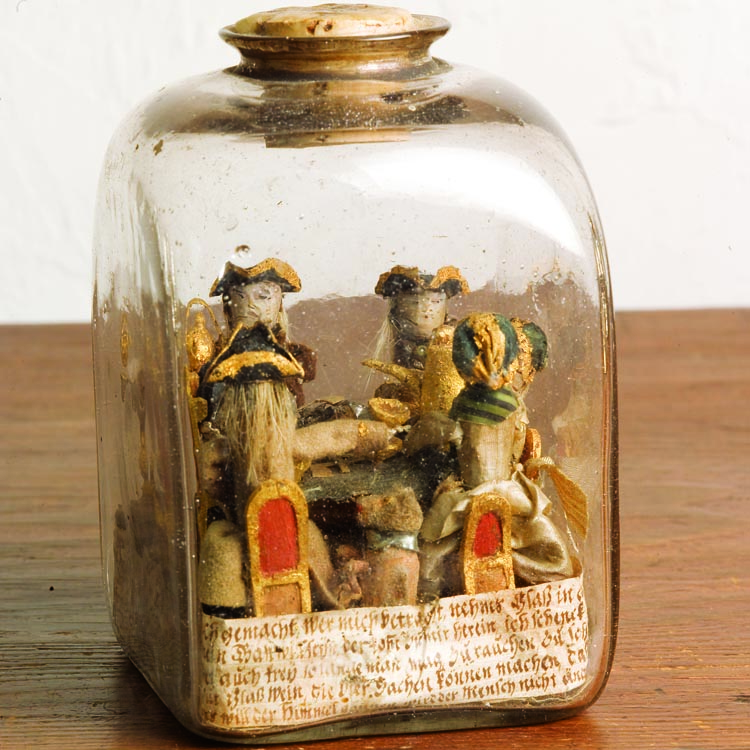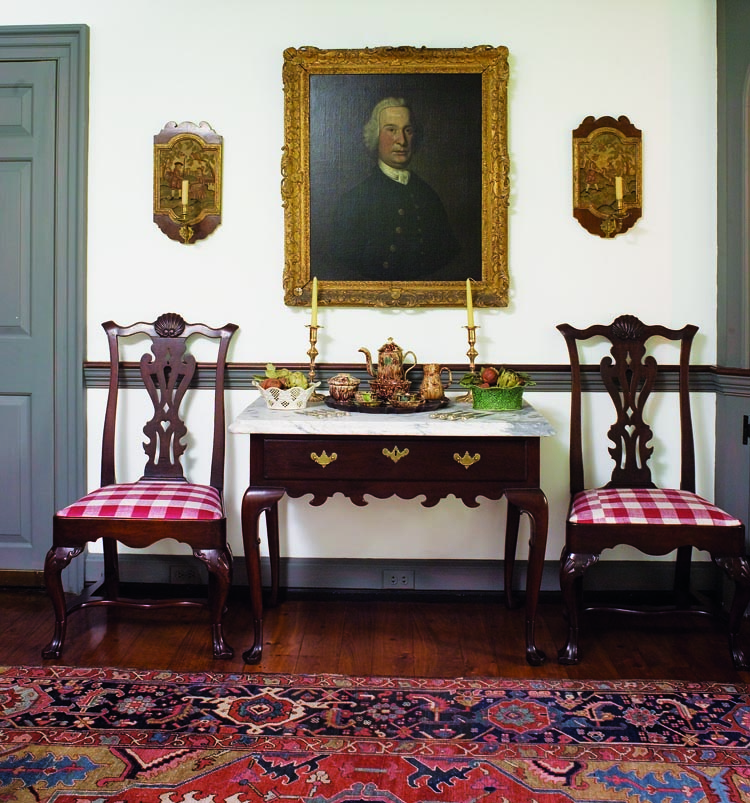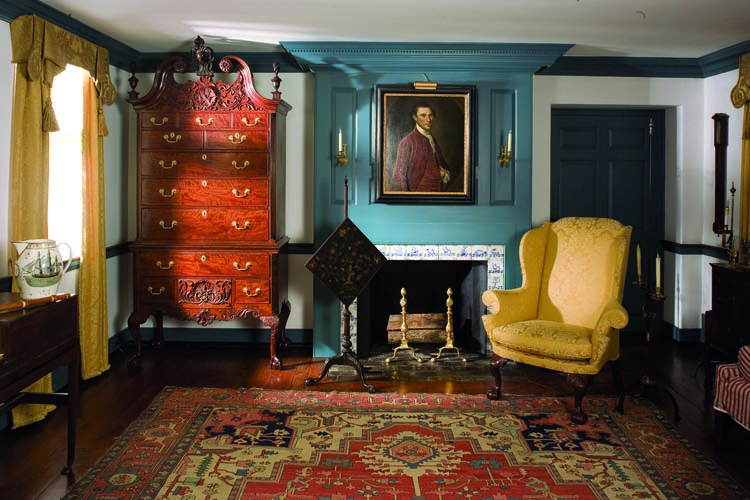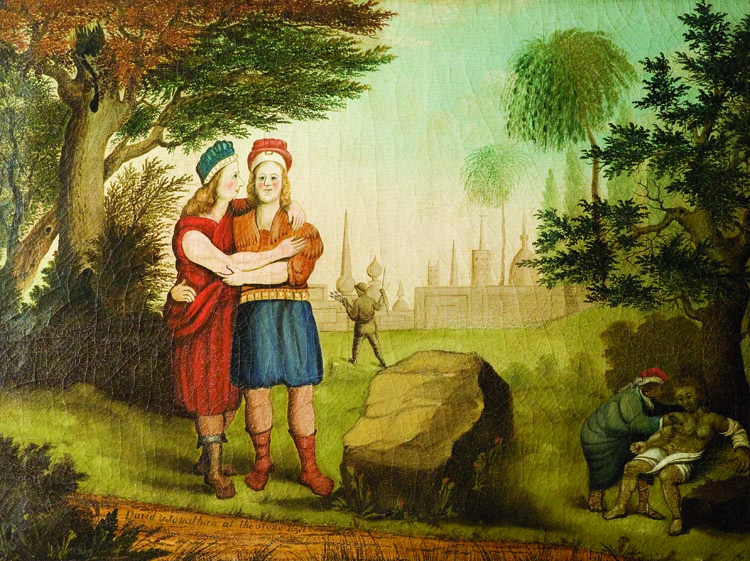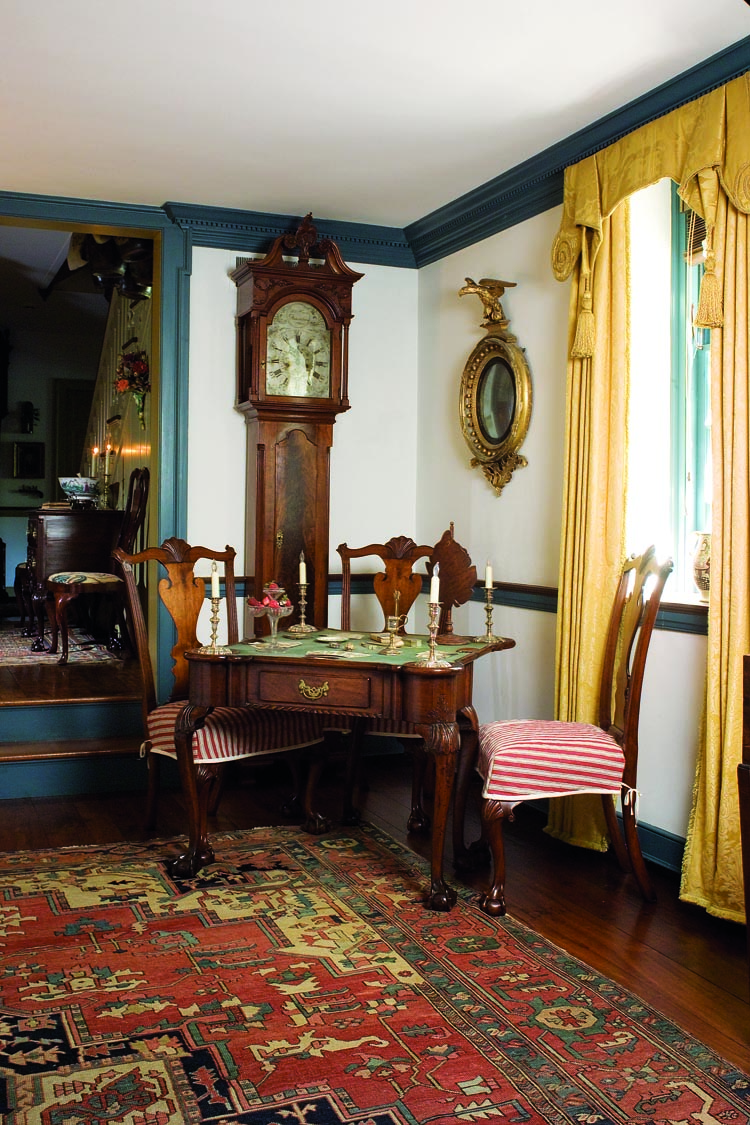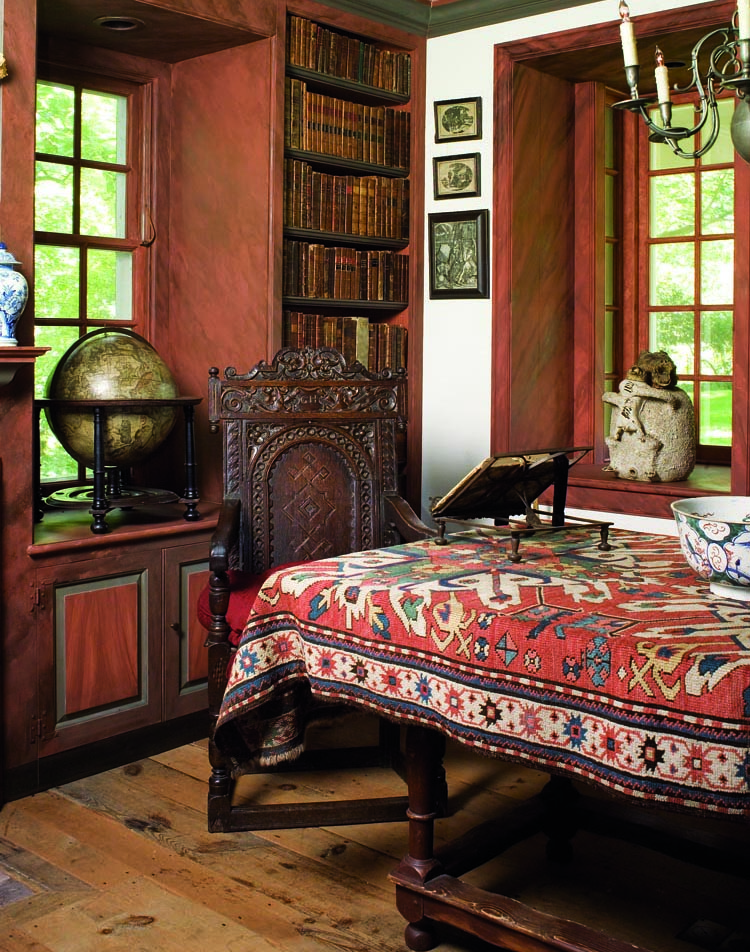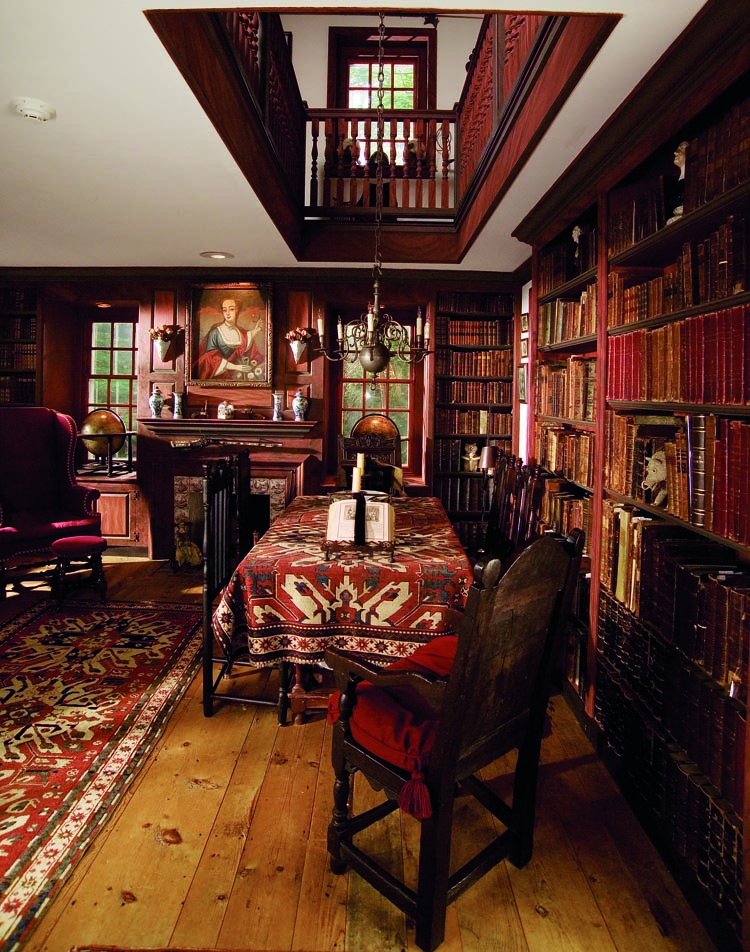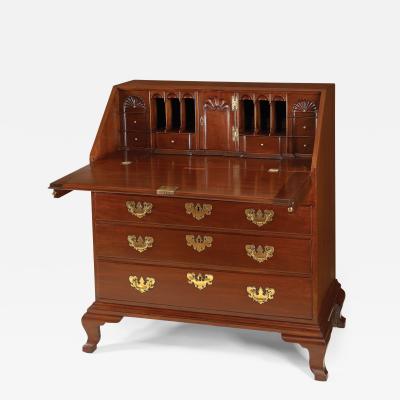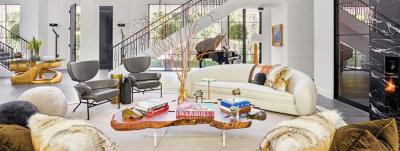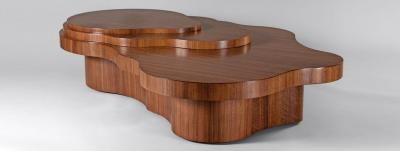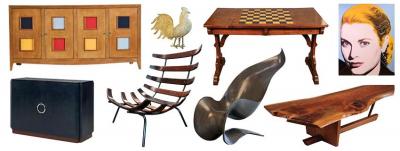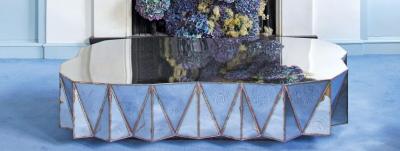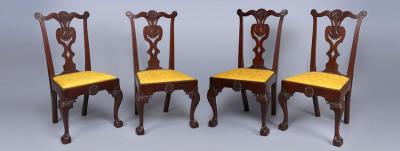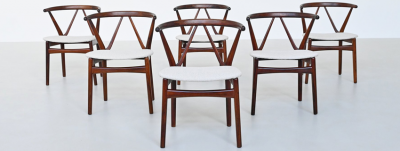The Collection of Irvin and Anita Schorsch: When Only The Best Americana Will Do

- The heart of the house is the keeping room with its large fireplace that dominates much of one wall. Period pots and kettles, iron and copper cooking utensils, peels, candle molds and early lighting surround the fireplace, which houses a beehive oven that the wife has used to bake as many as sixteen loaves of bread at a time. Elaborate cranes facilitate cooking. Combware, Delft chargers, and pewter measures are arranged across the mantel.
For one mid-Atlantic couple, collecting is “a pleasure you can count on for a lifetime.” The success of that philosophy is evident in every nook and cranny of their home. In over forty years of collecting, the couple has gathered the best of the best in their stone farmhouse built in the 1930s in strict adherence to eighteenth-century building techniques. Later additions have been subject to the same precision. For the architect, it was a labor of love; for the couple it’s a lifelong love. The house and its treasures bring each other to life. The wife says, “It is a teaching house, one in which the objects are never through talking to you.”
The couple’s primary area of interest is Colonial America, and they have immersed themselves in the period. No detail has been overlooked, and the strength and density of the collection is stunning and at times overwhelming.
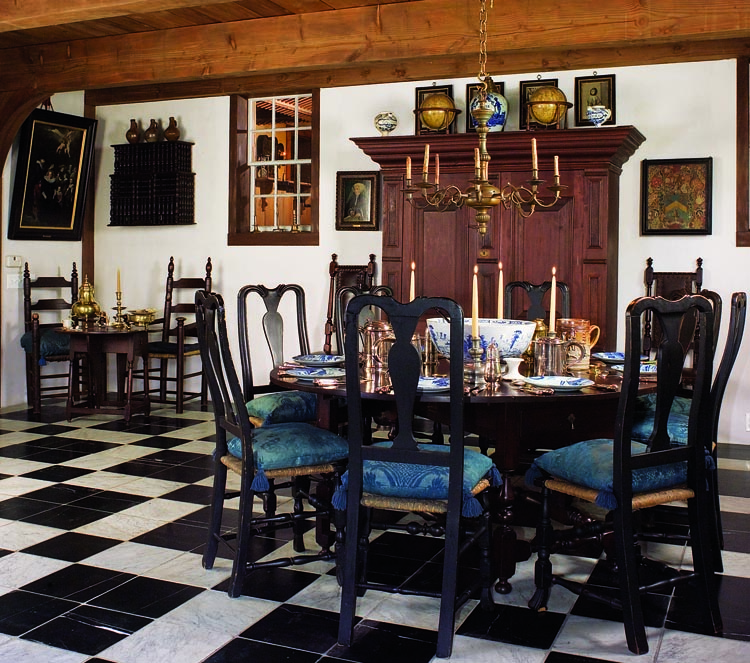
- The three-part kas in the New York Dutch room was made in Kings County, New York. The use of applied mahogany panels in conjunction with primary wood of red gum is typical of Kings County kasten; it has ebonized turnip feet. The kas descended in the Dirck Jansen van Sutphen family of New York and New Jersey. The Philadelphia drop-leaf gate leg table has exquisite ball-and-baluster turnings and is of an extraordinary size. It is able to accommodate at least ten diners. The table is set with Delft months-of-the-year plates, silver flatware, stoneware, and silver canns and tankards. A very large Delft bowl is positioned in the center of the table.
Beside an elaborately turned storage rack is a portrait by Dutch baroque artist Thomas de Keyser (1596–1657) of eight members of one family, some alive, some dead. The three putti, each the symbol of one of the souls below, fly easily up to God through a sky opening just for them. The painting, dated “anno 1634,” shows how close heaven and earth seemed to the seventeenth-century mind.
The keeping room is the heart of the house just as it would have been in the seventeenth and eighteenth centuries. Created to imitate a room in a typical Pennsylvania house in the colonial era, it was crafted by a carpenter skilled in the technique of re-creating such regional structures, using period materials such as rough hewn beams and old brick flooring. The large fireplace that dominates one wall is hung with period pots and kettles that are used by the collectors much as they were in the eighteenth century. A favorite room, the couple uses a William and Mary, turned gateleg table (not shown) for their daily meals. They cover it with a carpet as was done in fashionable homes of the period.
A period tavern bar on the opposite wall is stocked with leather and ceramic Toby jugs, pewter tankards, dated bottles, and clay pipes. Lighting here and throughout the house represents an earlier time. Some of the period candles are composed of materials, such as bear fat, that were available to country households; because of their originality and rarity, these are for display purposes only. One of the choice fixtures in the room is a rare Boston filigree shadowbox made of shells, silver wire, and mica. Besides displaying the creativity and talent of the maker (a young lady educated at a private finishing school), shadowboxes sometimes reflected and enhanced the light from a candle; important in an era when light sources were otherwise from windows and fireplaces. In keeping with the spirit of one of the finer eighteenth-century taverns, seating is comprised of “sausage” turned Brewster and Carver type chairs, William and Mary cane chairs, and joint stools.
As a counterpoint to this Pennsylvania room, a recently added New York Dutch room was designed with fifteen-inch-deep finished beams and a black and white marble floor found in elite Dutch homes of the seventeenth century. This room illustrates a formality known to early upper-class New York households but rarely seen in New England and the Middle Colonies.
The living room is given over to superb high-style Philadelphia Queen Anne and Chippendale furnishings. A scroll-top high chest with a swan neck pediment, floral rosettes, flame finials, and pierced cartouche, stands opposite a bonnet-top Philadelphia or Lancaster, Pennsylvania, desk and bookcase. Both were made in the last quarter of the eighteenth century. A superb Philadelphia Queen Anne/Chippendale carved mahogany easy chair is identified by its C-scrolled arms, carved cabriole legs, and elegantly raked rear legs. An intricately carved Philadelphia card table is set for play, with period cards, spectacles, and candlesticks. The Delft tiles in the fireplace are from a house in the Netherlands. The windows are hung with damask curtains designed by Ernest La Nano in the 1930s for the Governor’s Palace at Colonial Williamsburg; they were deaccessioned when a new furnishing plan was introduced.
The colonial portraits in the living room and elsewhere are stellar. Charles Willson Peale’s (1741–1827) portrait of the raven- haired Jane Hunter who married Maskell Ewing hangs above the Philadelphia camelback sofa. A pair of portraits of Susanna Stuart Fitzhugh Knox and her husband William Knox of Culpeper, Virginia, was painted by the artist John Hesselius (1728–1778) who gave Peale his first painting lessons; they are located in the living room. Ralph Earl’s (1751–1801) images of his patron Jared Lane and wife Apphia Ruggles Lane dominate the staircase. The Lombardy poplars painted into the background of Jared Lane’s portrait were not merely artful devices. Lane introduced the Lombardys as ornamental shade trees to New Milford, Connecticut, and raised them to plant in the town.
The husband admits to “a great affinity for my clocks!” He acknowledges that pieces with excellent workmanship are of particular interest and has taken each of his twelve clocks apart to unravel some of their history. One example bears the mark of the maker on the gears of the works; another retains the label of a craftsman who repaired it fifty years after it was made. An early Pennsylvania tall clock made by Jacob Godshalk of Towamencin County, Pennsylvania, has an indentation made over the years by a betty lamp that hung to illuminate the dial. James Warne, a London Quaker who crafted clocks for Philadelphia cases, made the clock in the front hall.
In the dining room the couple’s taste for fine workmanship is evident in the superb sideboard by Annapolis cabinetmaker John Shaw (1745–1829). A cabinetmaker by trade, Shaw also pursued other interest; it was he who designed the flag with the distinctive eight-point star that flew over the Annapolis State House when Annapolis was America’s capital. The sides of the bottle drawers are fashioned with grips in the shape of hearts, which facilitates the lifting of the drawers with their contents for ease of distribution during dinner parties. Its bottom is still lined with hay and covered with canvas to protect the bottles from breaking. An exceptional pair of shagreen (fish skin) knife boxes with marked silver claw and ball feet and side handles, made in London during the second half of the eighteenth century, houses elegant pistol handled knives. An elaborately wrought silver cruet stand by Samuel Wood (circa 1704–1794) of London, which the owners describe as “gutsy, like a piece of Chippendale furniture,” boasts compelling casters characteristic of Wood’s pieces. It shares the space with a rare surviving glass sweetmeat pole with silver mounts for twenty original etched glass arms and corresponding baskets. The Philadelphia Chippendale walnut dining table descended in the family of William Logan (1718–1776), son of James Logan, William Penn’s secretary and purchasing agent. The table remained in the family for six generations. The table is similar to ones made by cabinetmaker David Evans (1733–1817). Its “WS” stamped hinges are found on several other regional tables of the same period and likely refer to a British brass manufacturer.

- The plaster walls and exposed ceiling joists lend an early American look to the den. A William and Mary octagonal Boston or New York mixing table is arranged for festivities. The slate top is set with a Delft bowl with silver sieve, ladle, and funnel, and silver tankards by John Coney (1655–1722) of Boston and Edward Gibson of London. A Heemskirt mid-drip candlestick lights the table. To the left is a signed Adam Brant Montgomery County, Pennsylvania, tall clock with carved rosettes and three original tendril-like finials. A Philadelphia Windsor armchair and a William Savery-type Philadelphia ladder-back armchair appear on the left. A Boston or London hatchment, flanked by late seventeenth-century wax figures, hangs over the mantel.
The owners are careful stewards of their collection and maintain meticulous records, which they continually update. As the wife says, “You don’t always get all the information at once; it frequently appears much later.” In their office, located in the two-story library at the far end of the house, are many period books that they use as reference when researching objects or paintings. On the windowsill is a globe made by Gerardus Valk in Amsterdam, Holland, in 1700. Its mate, a celestial globe, sits on another window sill. A doll seated on the hearth in an eighteenth-century, New York, miniature chair was made in about 1710, probably in London. She is similar to one that belonged to William Penn’s daughter that was in the collection of the Historical Society of Pennsylvania.
Despite the stereotype of colonial life as dour, collections throughout this house suggest otherwise. In the Dutch room, the owners’ colorful circa-1740 Dutch or English birdcage fishbowl—the only intact example known—amused onlookers with the competition between a tormented bird and an anxious fish; the bird, perched in the interior bowl, could only savor the fish swimming around him safely in the exterior bowl. Two bawdy Delft kegs have the forms of a man and a woman respectively. A seventeenth-century harpsichord, also called a spinet because of its small size, would have provided musical entertainment, often in the bedchambers. White trailing vines painted on a red Taunton chest and leaves and hearts painted on the carved façade of a Hadley chest, both from Massachusetts, provide a sense of energetic liveliness in the same hallway. In the living room a rare large creamware pitcher offers a telling pictorial commentary on the differences between the sexes, at least when it came to furnishing a room. Throughout the house are five rare seventeenth-century needlework caskets. The example with Anglo/Catholic imagery was owned by English diarist John Evelyn.
Wherever the eyes rest throughout the house, the quality and rarity of each object is outstanding. But the house is not treated as a museum. It is a home the owners, their children, and grandchildren have enjoyed over the years. The complexity is labyrinthine, and the best part is that there is no end to it.
This article was originally published in the 7th Anniversary issue of Antiques & Fine Art magazine, which is affiliated with InCollect.com.





